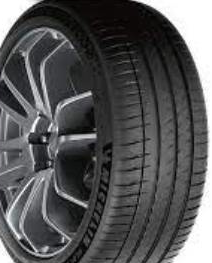The reason you always want the best performing tires on the rear of the vehicle, is to ensure you do your best to eliminate any oversteer situation. So regardless if the best tires are by tread depth, or tread type (Winter tires), the best 2 tires should always be on the rear.
 Understeer is the condition that while driving the front wheels lose traction and are unable to turn the vehicle in the desired direction. This will cause the front of the vehicle to push out on a turn.
Understeer is the condition that while driving the front wheels lose traction and are unable to turn the vehicle in the desired direction. This will cause the front of the vehicle to push out on a turn.
The natural driver response to this situation is to lift off the throttle and apply brake as required to get the vehicle to respond.
A common example of understeer would be trying to take a turn to quickly for the road conditions, and having your vehicle push out on the turn, and the driver having to lift off the throttle and apply brake to get the vehicle to turn in the desired direction.
 Oversteer is the condition that while driving the rear wheels lose traction while the front wheels grip. Oversteer is a more dangerous problem for the average driver than is understeer, because there is no natural driver reaction that will result in the driver regaining control of the vehicle.
Oversteer is the condition that while driving the rear wheels lose traction while the front wheels grip. Oversteer is a more dangerous problem for the average driver than is understeer, because there is no natural driver reaction that will result in the driver regaining control of the vehicle.
The most common result is that the driver is caught off–guard when this happens, and a collision or accident will be the result
This is why the best tires must always be mounted on the rear of the vehicle, to try to prevent any occurrence of oversteer.
The reason you always want the best performing tires on the rear of the vehicle, is to ensure you do your best to eliminate any oversteer situation. So regardless if the best tires are by tread depth, or tread type (Winter tires), the best 2 tires should always be on the rear.


 CAR & SUV
CAR & SUV ULTRA HIGH
ULTRA HIGH LIGHT TRUCK
LIGHT TRUCK WINTER
WINTER EV COMPATIBLE
EV COMPATIBLE ALL WEATHER
ALL WEATHER

 SHOP BY VEHICLE
SHOP BY VEHICLE SHOP BY TIRE SIZE
SHOP BY TIRE SIZE SHOP BY BRAND
SHOP BY BRAND VIEW ALL TIRES
VIEW ALL TIRES CLEARANCE TIRES
CLEARANCE TIRES




